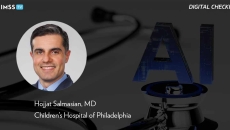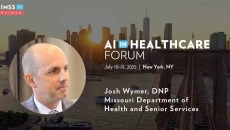Workflow
Dr. Hojjat Salmasian, CDAO and leader of AI at Children's Hospital of Philadelphia, discusses the first steps toward an AI strategy for hospitals and health systems as well as the key elements needed.
Megan Zakrewsky, VP of product for clinical data exchange at Veradigm, discusses how automating payer data exchange and reducing desktop crowding for providers supports decision-making and reduce burnout.
Narayana Health has also reduced administrative workload by over 50%.
Doctors at China Medical University Hospital have also spent less time making diagnoses using AI.
Because of this, Bethsaida Hospital Serang has also achieved 96% patient satisfaction.
The future of EMR systems is powered by AI, according to Oracle Health APAC's chief clinical CIO Michael Draheim.
Clinicians need to have integrity with how they present AI tools to their teams, focusing on how those tools can solve problems, says Josh Wymer, chief health information and data strategy officer at the Missouri Department of Health and Senior Services.
During an EHR transition, it is essential to keep the patient at the center of the transition, ensuring collaboration with clinicians and patients is done early, says Epic Emeritus CIO Kelli Garrison, founder and CEO of Verdant Consulting.
Healthcare organizations are vulnerable to cyberattacks like phishing scams during IT upgrades and business restructuring. Security awareness is important during any changes, says Ven Auvaa, ArmorPoint's information security director.
Artificial intelligence gives Cedars-Sinai's clinicians EHR-supported diagnoses and treatment plan recommendations after patients complete virtual urgent care clinic intake questions in a structured chat.





